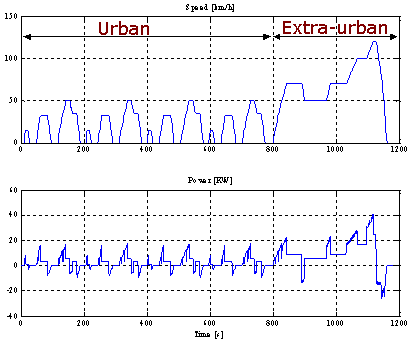HSV Power Demand
Summary
The net power achievable by conventional Photo-Voltaic Panels on the
roof of a car of normal dimension is about two orders of magnitude less
than the car maximum power. Therefore, it is reasonable to ask oneself
about the suitability of such solution. But this apparently simple and
sensible comparison may be misleading.
Statistics on Mobility
 |
In many industrialized countries, particularly around urban areas,
there is a large number of users that utilizes daily their car just
for short trips, with limited power. According to some recent studies
of the UK government, it can be stated that:
Source: Labour Force Survey, http://www.statistics.gov.uk/CCI/nscl.asp?ID=8027
|
It is reasonable to expect that in many European countries the situation
is not very different from the UK picture. In these conditions, the vehicle
power demand is in many cases much lower than the vehicle maximum power.
Vehicle Power Demand
Power demand can be determined integrating the longitudinal
vehicle model over a mission profile. A typical mission profile including
a urban drive (up to 50 Km/h) and an extra-urban drive (up to 120 Km/h)
is shown in the picture:

The power demand of a typical small car is computed (negative
values correspond to braking). Although the maximum required power is
about 40 KW (at maximum speed), the power values during other phases,
particularly in urban drive, are quite limited, and the average power
is substantially lower than the maximum value.
In such conditions, the energy obtained by photovoltaic
panels during driving and, mainly, the energy accumulated into the
battery during parking mode, may represent
a significant fraction of the energy required to propulsion.
Top - Previous
Module - Next Module
|






